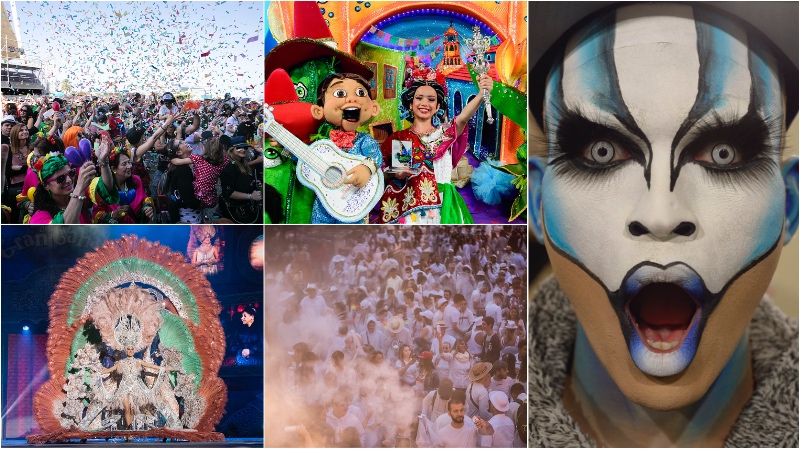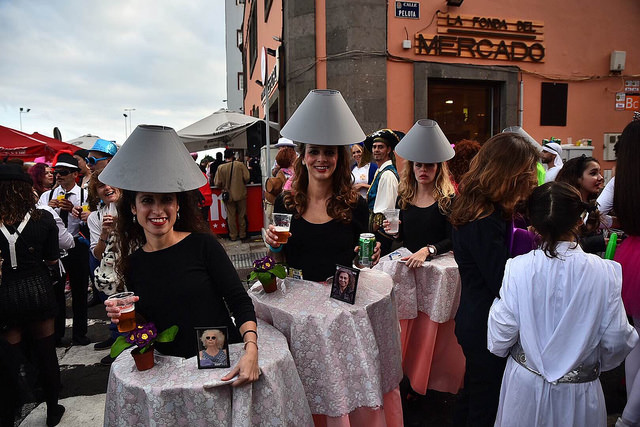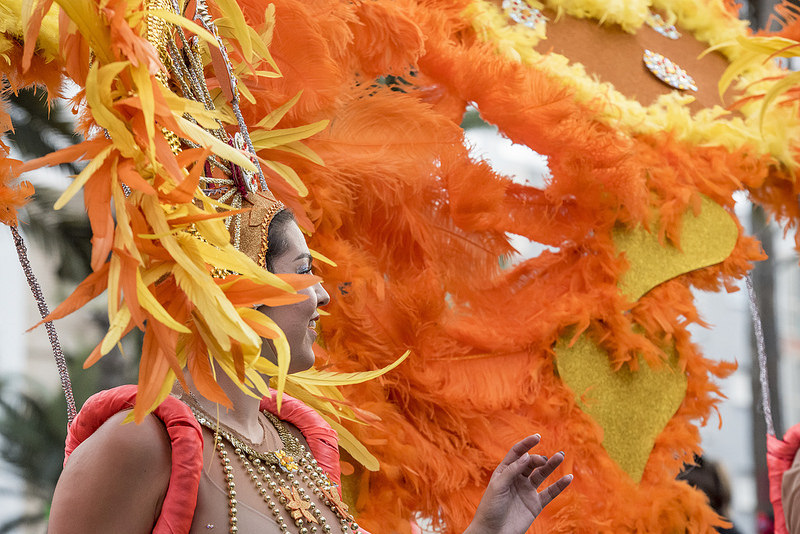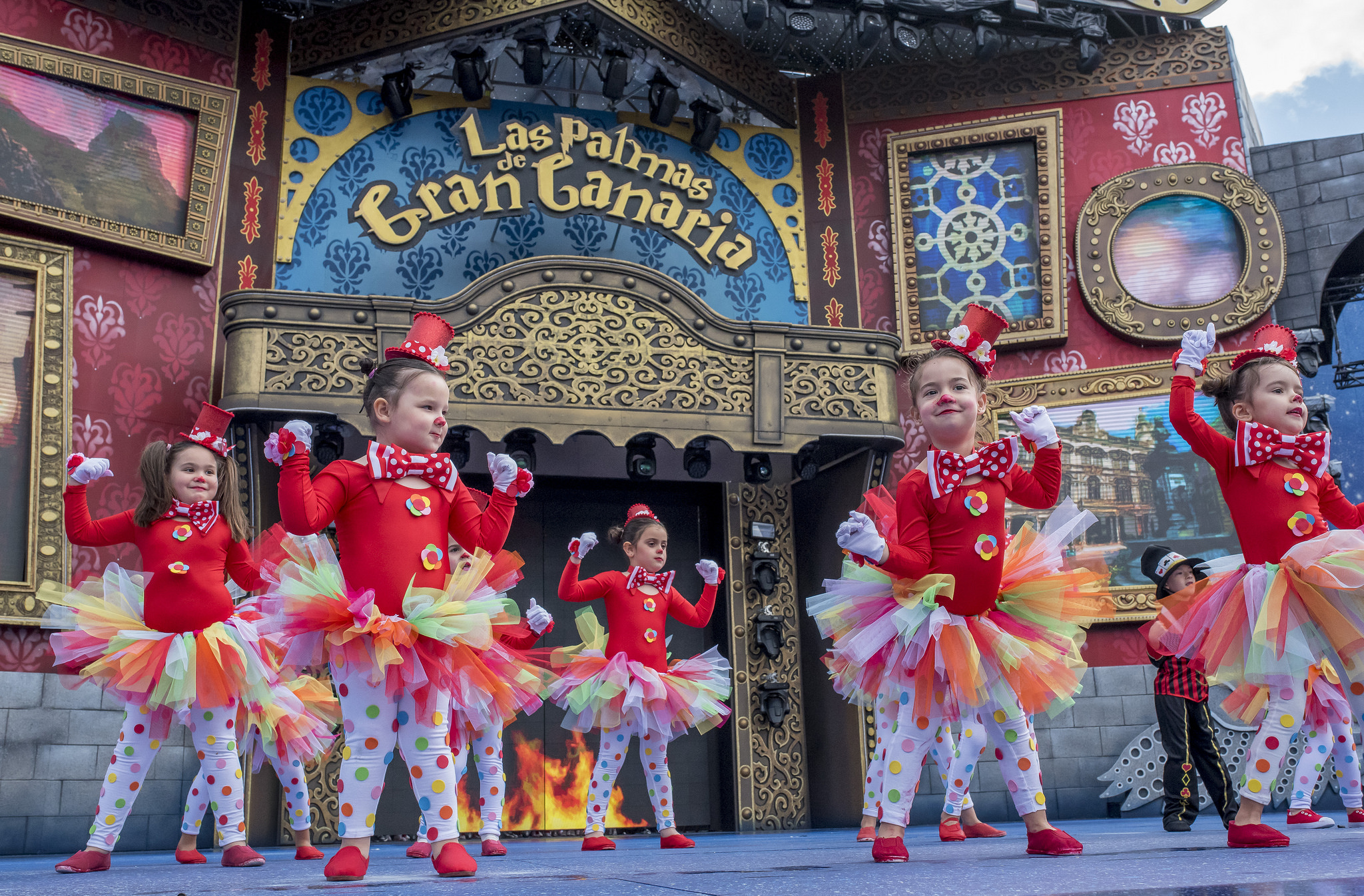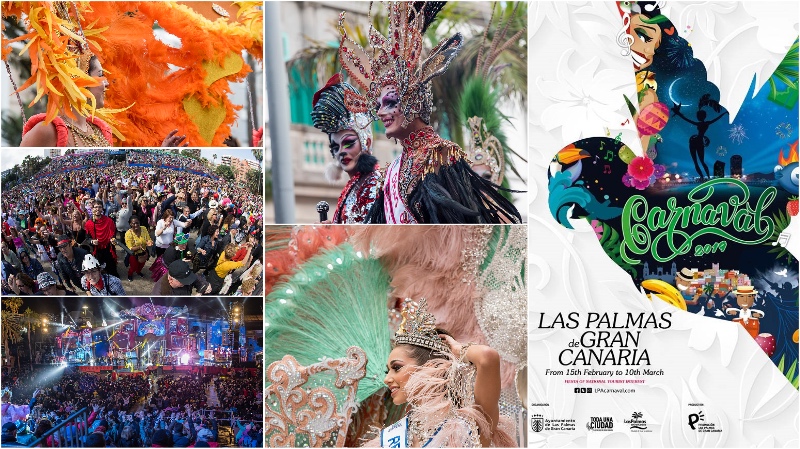Tips for a great weekend (and a long one) at the Las Palmas de Gran Canaria Carnival
The A Night in Rio Carnival, which is being celebrated in Las Palmas de Gran Canaria this 2019, has a weekend that features big in its diary: an intense weekend… and a long one. From Friday 1 March until Tuesday 5, the fiesta holds the events best known outside the Canaries, and it starts its nights of celebration with concerts, carrying on with the celebration of the Daytime Carnival, and even has a great parade devoted to children. If you’re in the city at this time of year, you can’t miss the Carnival, a “fiesta of tourist interest” which visitors find enthralling.
Fiesta nights
The area around Santa Catalina (at the rear of the Park) will hold its fiesta nights with concerts, starting at 10.30 pm at night. They’ll be on Friday 1 March (with performances from local groups), Saturday 2 (with more music and a unique Cock fight – Freestyle Rap) and Monday 4 (Carnival Monday, which includes a performance from a Queen tribute group). These are nights of fun out in the street, in amongst the crowd and the fancy dress.
Nights that also follow on from the great Carnival Galas: the Gala to select the Carnival Queen (Friday 1, at 9 pm) and the internationally famous Preselection Gala and the Drag Queen Gala (Saturday 2 and Monday 4, at 9 pm). The tickets offered by the organising committee for these events are already sold out, although the area around the events, at Santa Catalina, is always very lively.
Celebrations in the classic city
As well as this, the old city resumes the fiesta on Saturday 2, with a daytime celebration in Triana’s Calle Mayor (a leading commercial area) and the Traditional Carnival on the night of Monday 4 (where everyone dresses in white and throws talcum powder at each other in recollection of the Indianos, emigrants who made their fortunes in America before returning home, in a party which the Casa de La Palma started to organise as a tribute to the great traditional celebration which takes place on that island every year.)
Santa Catalina, in the daytime
The Park, the heart of the Carnival in Las Palmas de Gran Canaria, doesn’t go quiet during the day. There will be celebrations in the sunlight on Saturday 2 March from 12 pm onwards (at 5 pm, Las Canteras will also have a little sample of the Carnival on that same day), on Sunday 3 March and on Carnival Tuesday, 4 March, with Carlinhos Brown in concert (free entry).
The Children’s Parade
Finally, on Carnival Tuesday again, the great children’s parade features on the programme, winding its way from the Castillo de La Luz (the city’s old fortress defending it from pirate attacks) to Santa Catalina. Groups of children and prizewinners from the Children’s Carnival take part … and a crowd full of families with large numbers of children in fancy dress. This will be from 5 pm onwards, and at 7 pm the Park will be the venue for a grand fiesta for the little ones.
How to get around
The city offers an extensive public transport network with the Guaguas Municipales bus company, which covers journeys between the two ends of the city, Vegueta and the Port (the area in which Santa Catalina is located), with routes that include 12, 17 and 1; visitors can pay the driver directly, at a fare of €1.40, or buy a bus pass (bono de guagua) at newsagents or at the Guaguas Municipales points of sale in the Santa Catalina Park and the Pérez Galdós Theatre area. You can also get around by bike, with the public bicycle hire service, Sitycleta. Or by taxi. In addition, visitors can take a tour on the City Sightseeing bus, with its main stop in Santa Catalina.
Where to eat
Both Vegueta and the Santa Catalina and Las Canteras area are full of eating places frequented by the locals. On festival nights the Carnival refreshment stands provide quicker solutions. Bear in mind that in Las Palmas de Gran Canaria, as an urban destination, there do not tend to be places specifically for tourists: the natives mix freely with visitors in bars and restaurants.
Celebrate Carnival in the daytime too in Las Palmas de Gran Canaria
The second week of the A Night in Rio Carnival in Las Palmas de Gran Canaria features two types of groups: murgas and comparsas. These groups will be competing throughout the week in Santa Catalina Park to win the prizes for best performance and best costumes; they make up no small part of the popular identity of these festivities.
The murgas, with their critical and acidic, yet humorous songs, define themselves as the very expression of the Carnival: the target of the subjects they touch on is more often than not the establishment. They take on the traditional Carnival job of criticising issues which cannot always be broached in the same way over the rest of the year, although nowadays that is not so much the case. The contest, with a huge level of participation, holds its heats over this week. The final will be on Saturday 23 February; the tickets which go on sale always sell out. But entrance to the last of the heats, on Wednesday 20 February (8.30 pm), is free.
The comparsas, in turn, vie with each other on Friday 22 February, in a competition with a strong tradition; the groups throw all their passion into their participation. Admission to this final is free (9 pm).
Vegueta Daytime Celebration
Visitors, though, can begin to enjoy things already this weekend with the famous Vegueta Daytime Carnival (on Saturday 23 February from 12 pm), with music a-plenty and heaving with people in the historic quarter of the city: this is one of the festivities’ biggest events, and it’s a must if you’re in Las Palmas de Gran Canaria on these dates. It’s the first of various daytime celebrations: others will take place in Triana and in Santa Catalina (see schedule).
Dog Carnival and Santa Catalina Park Fiesta
To give an example, the celebration that will take place in Santa Catalina Park on Sunday 24 February, from 3 pm onwards. Before that, and on the same stage in the park, there is a Dog Carnival at 12 pm (free admission), an increasingly popular event: another of the Las Palmas de Gran Canaria Carnival attractions for the visitor, which is also fun for all the family. You can’t miss the day when dogs come out in fancy dress!
Getting around
The city offers an extensive public transport network with the Guaguas Municipales bus company, which covers journeys between the two ends of the city, Vegueta and the Port (the area in which Santa Catalina is located), with routes that include 12, 17 and 1; visitors can pay the driver directly, at a fare of €1.40, or buy a bus pass (bono de guagua) at newsagents or at the Guaguas Municipales points of sale in the Santa Catalina Park and the Pérez Galdós Theatre area. You can also get around by bike, with the public bicycle hire service, Sitycleta. Or by taxi. In addition, visitors can take a tour on the City Sightseeing bus, with its main stop in Santa Catalina.
Where to eat
On the days of the Daytime Carnival, the choice of places to eat is wide, both in the historic quarter of the city and in the area around the Santa Catalina Park, or nearby, in Las Canteras. Inside the park there are also different food stalls and little eateries. Visitors can find good quality food, featuring both international or local cuisines, and to suit all pockets; all of these places are frequented by locals too.
Four essential tips for getting into the swing of the Las Palmas de Gran Canaria Carnival
From 15 February to 10 March Las Palmas de Gran Canaria holds its largest popular festival: the Carnival, which in 2019 is dedicated to the theme A Night in Rio, as a tribute to the famous celebrations in Rio de Janeiro. Travellers who are in the city between those dates can enjoy the unique atmosphere of the festival in Vegueta and in the Santa Catalina Park and its surroundings, the prime places to experience the Carnival, and can even join in the festivities in an open, cosmopolitan city well used to visitors. How? Here are some basic suggestions for keeping informed about the Carnival.
How to find out the programme in detail
The first step is to find out how the festival unfolds. The official website of the Las Palmas de Gran Canaria Carnival, wwww.lpacarnaval.com, provides up-to-date information on the events taking place and a programme which can be consulted in Spanish and English. All you need is a mobile device with an Internet connection to find out the key dates in the schedule.
The first weekend includes the opening speech (pregón), at 8 pm on Friday 15 February, with a Carnival musical parade (pasacalles) in the area around the Santa Ana Square, in the old quarter of Vegueta, culminating in a concert. On Saturday 16 the events begin in the spectacular setting of the Santa Catalina Park, with the competition for children’s groups at 7 am; entry is free. This is the focal point of the Carnival competitions. On Sunday 17 there is more family entertainment in Santa Catalina, with the festival of children’s costumes at 11 am, and the Grand Dame Gala, at 8 pm, where the first Carnival costume designs are displayed. It’s well worth seeing (entry is free).
How to join in: Costumes
Every year the Las Palmas de Gran Canaria Carnival is dedicated to a specific theme. In 2019 it is A Night in Rio: Brazilian motifs, headdresses, hats and more elaborate costumes can be found in the city’s large department stores and shopping streets, from Mesa y López to Triana. Las Palmas throws itself wholeheartedly into the Carnival and there is no lack of places to find a costume or accessories. And this year, if they refer to the Rio Carnival, all the better.
How to get around
The city offers an extensive public transport network with the Guaguas Municipales bus company, which covers journeys between the two poles of the city, Vegueta and the Port (the area in which Santa Catalina is located), with routes that include 12, 17 and 1; visitors can pay the driver directly, at a fare of €1.40, or buy a bus pass (bono de guagua) at newsagents or at the Guaguas Municipales points of sale in the Santa Catalina Park and the Pérez Galdós Theatre area. You can also get around by bike, with the public bicycle hire service, Sitycleta. Or by taxi. In addition, visitors can take a tour on the City Sightseeing bus, with its main stop in Santa Catalina.
Where to eat
Both Vegueta and the Santa Catalina and Las Canteras area are full of eating places frequented by the locals. On festival nights the Carnival refreshment stands provide quicker solutions. Bear in mind that in Las Palmas de Gran Canaria, as an urban destination, there do not tend to be places specifically for tourists: the natives mix freely with visitors in bars and restaurants.
Carnival with all the family
The Las Palmas de Gran Canaria Carnival, designated a Fiesta of National Tourist Interest, becomes the epicentre of activity for almost a whole month for a city with a different way of living through the winter. People living here are passionate about the event, and it works its charms on visitors who can take advantage of the dates to join the celebrations in the street, and who also attend the great galas in the programme. The Carnival Queen Gala or the famous Drag Queen Gala, followed worldwide, are the identifying features of a fiesta, which, all the same, also sets aside plenty of space in the programme for family events. Indeed, the little ones have a whole calendar of entertainment over these days in the Gran Canaria capital, immersed in its own Carnival culture.
The 2019 festivities, themed around A Night in Rio, in tribute to the Rio de Janeiro carnival celebrations, as a symbol of openness, freedom and integration. And, like every previous year, the schedule planned by the organisers offers a great range of things to do for younger carnival-goers. On the one hand, there are acts which are specifically designed for children. And on the other, there are different events suitable for people of all ages, which can be experienced in the city as a family. This is another characteristic feature of this Carnival which is unique, contemporary and belongs to a city which is not only transformed by Carnival but also transforms itself for Carnival. In this case, from 15 February until 10 March 2019.
The first weekend with children at centre stage
On the first day, when the opening proclamation takes place in Plaza de Santa Ana, right in the historic centre, families can get an advance taste of the festivities with a musical parade proclaiming the start of Carnival, as it passes through the city’s oldest streets. This is only an appetiser for everything that will take place later around the Parque Santa Catalina, where each year a stage is built (designed according to the allegory that the citizens choose each year as the theme for the Carnival): this is where all the great spectacles of the festivities take place.
The first, Saturday 16 February, with the junior comparsas – stage shows – contest (7 pm), where visitors can see for themselves how the Carnival’s youngest talents experience the festivities. On the following day, from 11 am onwards, Santa Catalina brings together a multitude of junior groups as they celebrate their own fancy dress festival. Their families cheer them on from the audience… as do a good crowd of tourists who pass by the stage on their visits to the city: guests at its hotels and apartments, day-trippers from the south of the island… or people on the cruises that have put in at the nearby Santa Catalina Dock, and who are becoming regulars at these events in the park.
Daytime and Pet Carnival
The first full week of the programme is devoted to the murgas and comparsas competitions, although on the Saturday and Sunday, families travelling to the city have other opportunities to join the celebrations. Among these is the Vegueta Daytime Carnival; it’s a good idea to go early if you’re with children, before the multitudinous crowd takes over the streets again. This is the programme for Saturday 23 February: the first of the daytime fiestas that fill so much of the Las Palmas de Gran Canaria Carnival Schedule, which repeats these celebrations in the sunlight on two Sundays, 24 February and 3 March, and on Carnival Tuesday (5 March) in Santa Catalina Park, and on Saturday 2 March in and around Triana’s Calle Mayor, in the historic heart of the city once again.
Sunday 24 February is also a chance for the little ones to get to know the Dog Carnival (12 pm). The pets in their costumes, together with their owners, gather at Santa Catalina to compete on stage in a unique competition, followed from the stands with the same spirit. What a gathering of Carnival dogs, showing off their costumes in this singular social happening.
The kids’ throne
On that same Sunday, 24, the Parque Santa Catalina is taken over by the candidates for Junior Queen or King (7 pm). A competition with very young contenders for the junior crown of the Carnival. It is no insignificant matter: many of the designers who compete in the big gala with their spectacular designs are also the designers behind the kids’ costumes. This gala is closely followed by the families, and reveals to the visitor the importance in the fiesta of the Queen’s dresses.
A Tuesday for the little ones
On Carnival Tuesday, 5 March, the Gran Canaria capital’s Carnival schedule dedicates a great day to kids. It’s the day of the Junior Parade, which leaves from Castillo de La Luz at 5 pm, and ends in Santa Catalina. It’s the festivities’ great junior procession, where groups with the youngest Carnival participants take part, alongside floats and a multitude of families in fancy dress. The parade ends with a great children’s party in the Parque Santa Catalina, with musical performances. Without a doubt, a great opportunity for the little ones to understand the importance of the Carnival and to join in the fun of the great fancy dress party.
Las Palmas de Gran Canaria Carnival: A celebration looking out to the world
Carnival is a tradition that could be called fundamental for the citizens of Las Palmas de Gran Canaria. This fiesta was able to resist the years of dictatorship in Spain, disguised under the name of “Winter Fiestas”; it was celebrated virtually in hiding in the social clubs and the streets of a neighbourhood of the likes of La Isleta: a working-class urban community built as a result of the expansion of Puerto de La Luz and of Las Palmas, where the humour, the masks and the jollity of the carnival party-goers were always appreciated and enjoyed.
Although the first celebrations of masked balls point to the historic city centre, its historic Gabinete Literario – Literary Forum Building – and the Italian influence which originated from Venice (and which travellers coming to the Grand Canary capital brought with them), it was in Isleta where today’s Carnival was born, a carnival which has evolved from the furtive gatherings of “masked revellers” to a “Fiesta of National Tourist Interest” (it was given this status by the Spanish Ministry of Tourism in March 2017). In addition to this, the Society for the Promotion of Las Palmas de Gran Canaria, the Carnival organiser, is at work to achieve “Fiesta of International Tourist Interest” status. How has such an evolution been possible?
An open, cosmopolitan city
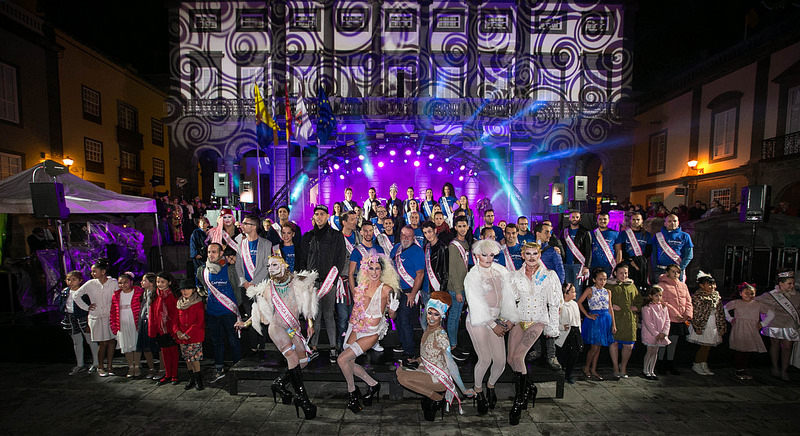
The secret is out in the streets, in the open, tolerant and cosmopolitan spirit of the city itself, which has grown to the point of becoming the main urban Canary Island destination around its port. Docks which haven’t stopped growing since the end of the 18th century, to act as a logistics centre between Europe, Africa and the Americas. And also to become a supplies point for vessels on those routes, bringing together a great international fishing fleet in the 1970s and 1980s (Soviet and Asian fishing vessels included) and to function as a merchandise transfer centre, as well as becoming, in the last decade, a hub for naval repairs for latest generation vessels.
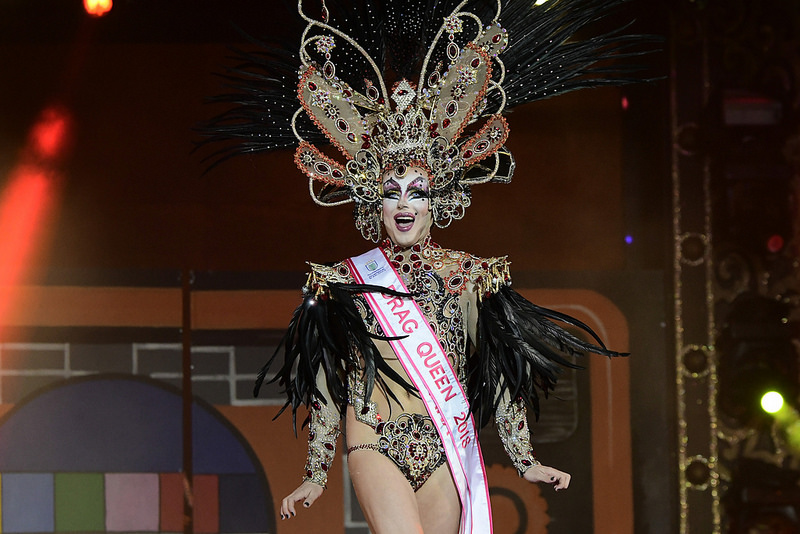
The Gran Canaria capital is long used to receiving visitors of different nationalities, who have even decided to settle and to form their own communities in the city: from the Indian sub-continent, from Korea, from Africa… Very close to the Port, La Isleta was the first urban area to develop the feature of being the open, cheerful host. It is not surprising that it should have been from there, once the democratic era had started in Spain, that a Carnival should arise, albeit still in its early days as far as its programme was concerned; it was the beginning of the parades of the sumptuous dresses of the candidates for carnival queen, of the sound of the murga street bands (under the influence of the chirigotas of Cadiz) and of the dances of the carnival troupes. Soon, the city made these celebrations its own, with thousands of people gathering around the Santa Catalina Park to watch gala performances and competitions and, above all, to enjoy the partying in the street, dressed up in carnival costumes.
The 21st century Carnival

Carnival, the “festival of the flesh” didn’t stop evolving at that point. In the 21st century, the programme has come to include spectacular events, it has moved with the times to celebrate the spontaneous encounters of those in fancy dress in the daytime… and to catch the attention of the numerous tourists who visit the city. Although the proclamation announcing the start of the celebrations takes place in Vegueta (in the Santa Ana Square, with its layout of the Cathedral on one side and the City Hall buildings on the other, in anticipation of the architectural model that the Spanish would later take to America), the main galas and competitions are held in the Santa Catalina Park, between the cruise ship dock and the Playa de Las Canteras, one of the most famous urban beaches in the world.
A spectacular stage is built there in Santa Catalina Park, where murgas, comparsas, children’s groups, groups in carnival costume, models covered just in body paint, and even pets (interest in the Dog Carnival is growing) compete, and where Carnival chooses its Queen and its Drag Queen.
In each year’s version, citizens choose a theme to base the celebrations around. In 2019 the Las Palmas de Gran Canaria Carnival is dedicated to “a Night in Rio“: this is why the Santa Catalina stage will be turned into a tribute to the Carioca Carnival, and many of those taking parts are looking for suitable costumes which evoke the famous Brazilian fiesta.
What kind of experience is the Las Palmas de Gran Canaria Carnival?
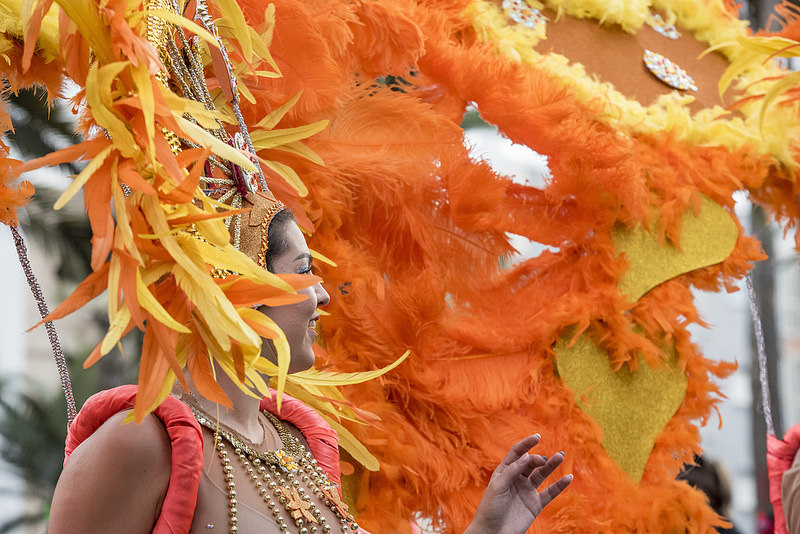
For visitors, the experience of the Gran Canaria Carnival is an easy one if they are just looking to enjoy the atmosphere and the fiesta in the streets. The programme covers events from 15 February to 10 March. On the first night, 15 February, Santa Ana Square hosts the speech declaring the Carnival open: entry is free, and this historic area starts to live the moment, with musical groups parading the streets and a great ambience in a setting where bars and restaurants predominate… the beauty of this historic area is outstanding: it is here that the city started off, in 1478. It’s a good imitation of A Night in Rio, on this side of the Atlantic.
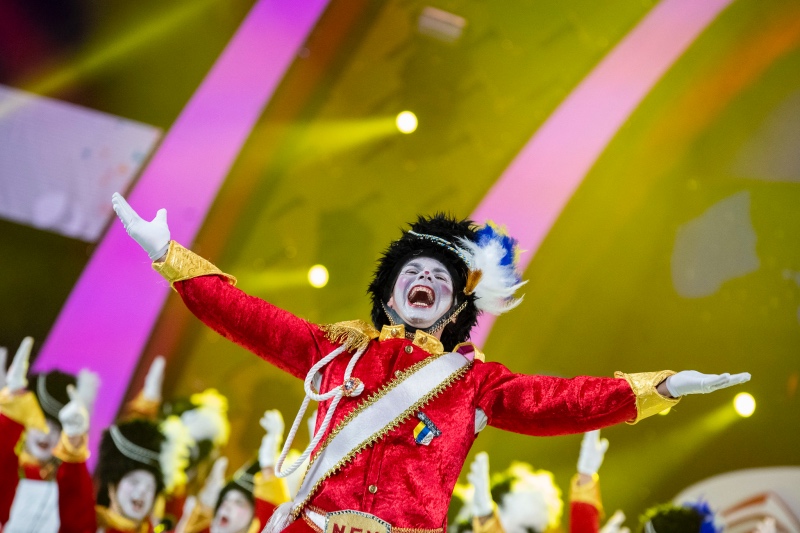
The first full week is devoted to group competitions (“murgas” – carnival street bands and “comparsas” – carnival stage shows) in Santa Catalina, which becomes the focus of attention of fans of these hotly disputed competitions; those taking part do so with great passion. Over the weekend of 23 and 24 February, however, visitors also have other alternatives for their entertainment.
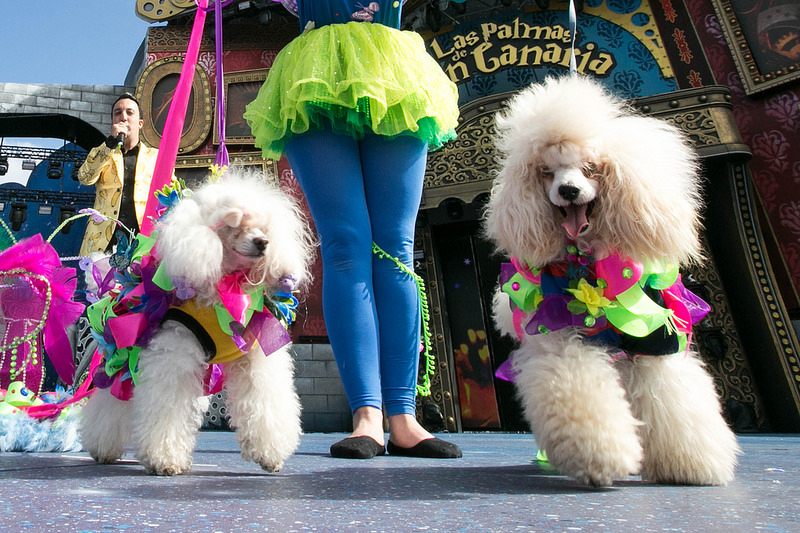
On Saturday 23, Vegueta takes over again with a massive Daytime Carnival, an attraction not to be missed during Carnival. And on Sunday 24, these daytime festivities move to Santa Catalina, where the Dog Carnival is held at midday: an event where owners and pets compete in fancy dress.
A very special weekend
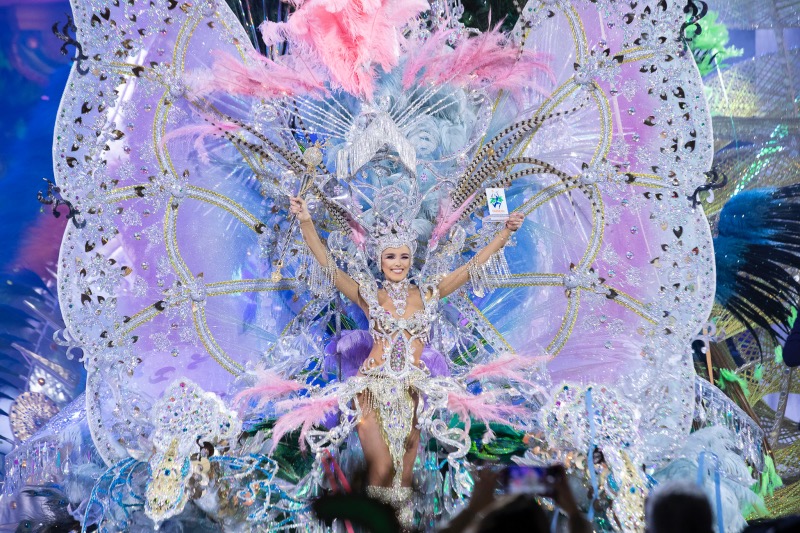
The following weekend (which lasts from Friday to Tuesday), to start March off, it’s the turn of the great shows which are televised for the whole world from Santa Catalina. The Queen’s Gala (on Friday 1) and the final of Drag Queen Gala, on the night of Carnival Monday.
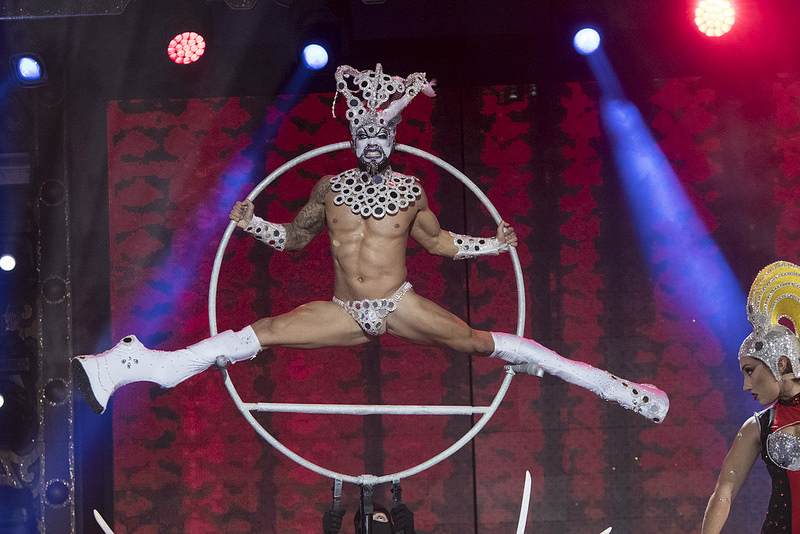
Beforehand, the candidates compete in a preselection programmed for Saturday 2, with no cameras allowed (so no secrets can be leaked) and which brings together a huge crowd. These events, however, are in great demand with local audiences and with tourists: entry is by ticket only, and tickets are put on sale a few days before in the park itself or on the Internet. You have to keep alert: these tickets sell out very swiftly.
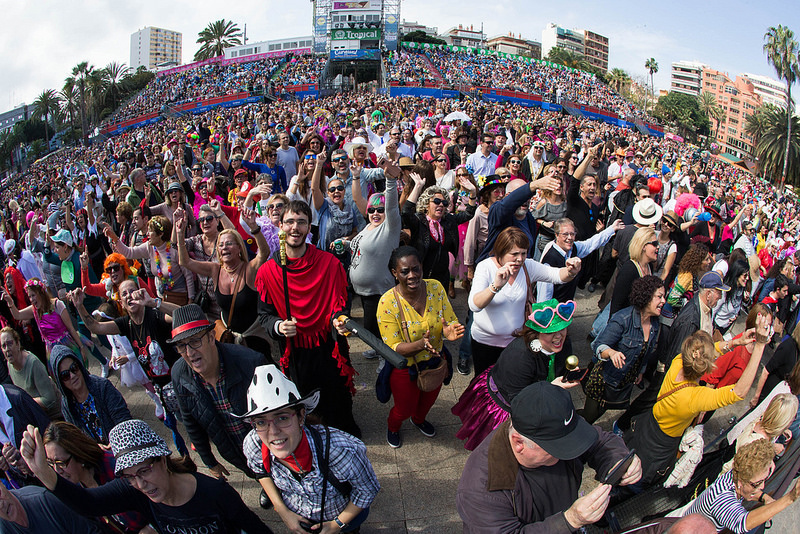
Anyway, the festive atmosphere outside these competitions is very lively, with a Daytime Carnival in Santa Catalina on Sunday 3 and Tuesday 5.
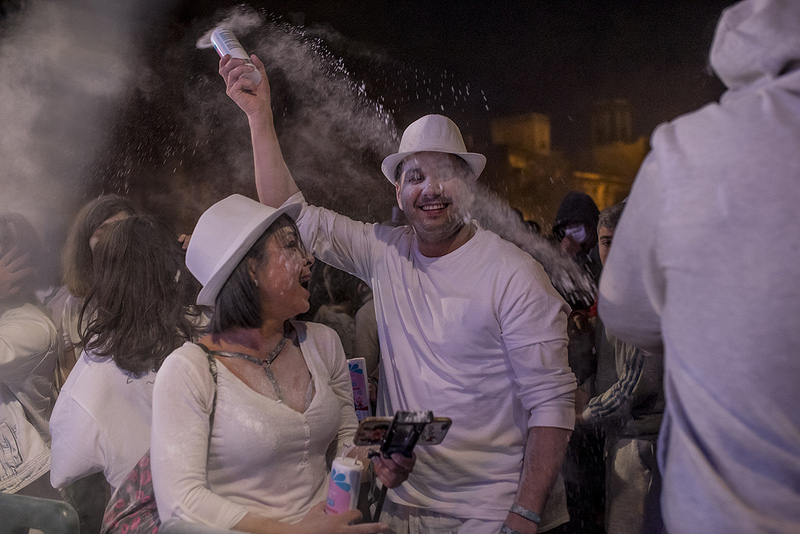
As well as this, the old city resumes the fiesta on Saturday 2, with a daytime celebration in Triana’s Calle Mayor (a leading commercial area) and the Traditional Carnival on the night of Monday 4 (where everyone dresses in white and throws talcum powder at each other in recollection of the Indianos, emigrants who made their fortunes in America before returning home, in a party which the Casa de La Palma started to organise as a tribute to the great traditional celebration which takes place on that island every year). The Carnival Nights and their concerts in Santa Catalina around this time are another attraction.
The big parades
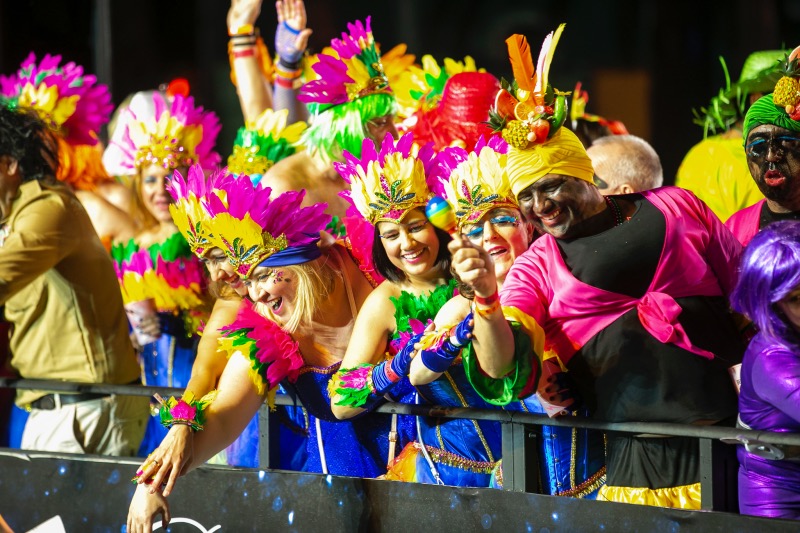
If visitors find themselves in the city in these last weeks, they will encounter a capital heading for the streets in fancy dress. In particular, in the big parades or cavalcades. The children’s parade is programmed for Tuesday 5 March… and the Great Cavalcade is on Saturday 9 March. Floats (large vehicles also decorated for the occasion) mix in with the Carnival groups and the multitude that leaves La Isleta for the historic area over a long day which is almost the close of the Carnival.
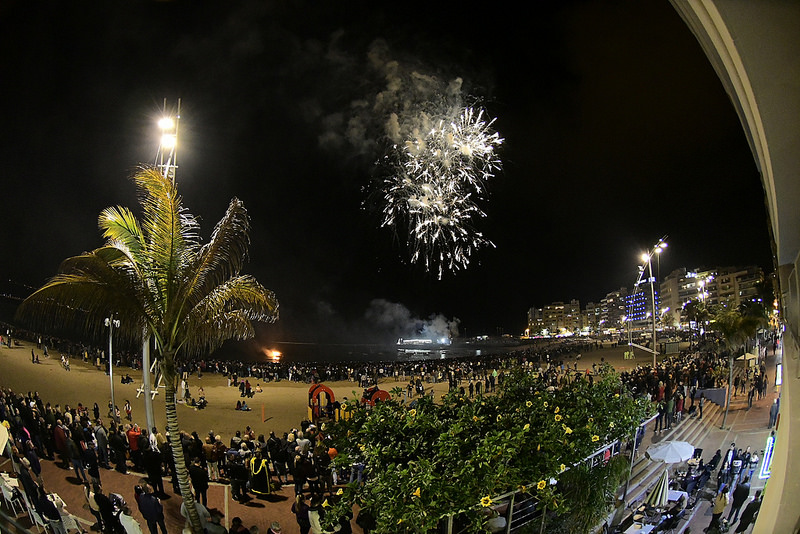
And the closing festivity will take place on Sunday 10, with the popular “Sardine’s Funeral”: a fish which stays in the custody of the Carnival Queen and Drag Queen in procession to the Las Canteras beach, where the figure of the fish is burned in the water.
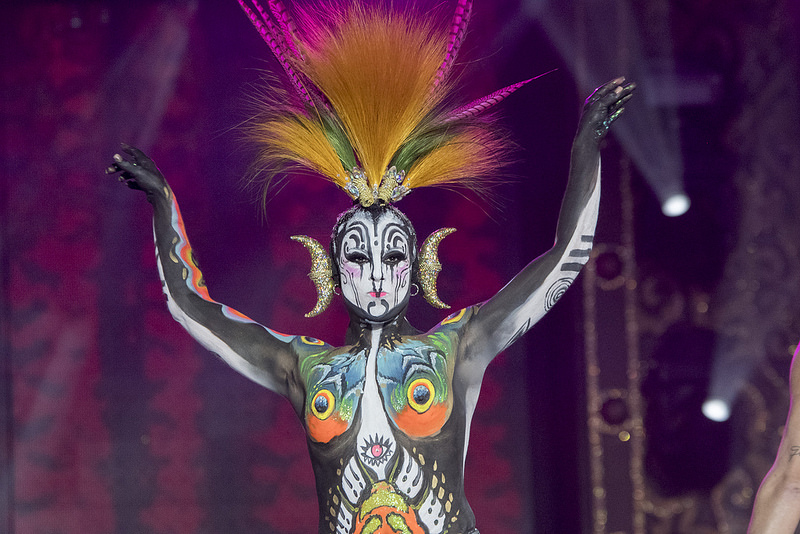
Before these parades, the body painting competition shouldn’t be missed, in Santa Catalina on Friday 8 March: the skill demonstrated by the designers is stunning and the competition has increased in importance in the Carnivals of the last few years.
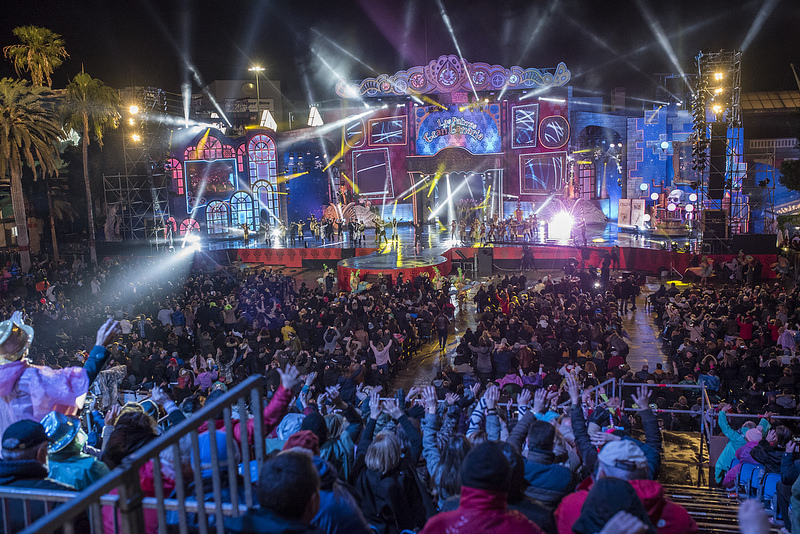
With a schedule like this, it’s difficult not to get involved in the party spirit that invades Las Palmas de Gran Canaria for a whole month. Visitors will soon get caught up in its Carnival, with that particular stamp that a city accustomed to welcoming outsiders puts on it, in such a natural way… a city which is used to making its friendly merriment contagious.

